Words and Images: Chris Burr & Brenda Clapp
Ideas are like seeds: some can germinate in any environment and flourish quickly; others need just the right environment and take many years to develop to their full potential. If the Tour Te Waipounamu (TTW) was a seed, it would be a Totara tree: it needed just the right environment, took years to grow – and was hard as f**k.
The brainchild of seasoned adventurer, obsessive bikepacker and closet masochist, Brian Alder, the TTW was five years in the making. Creating it involved scoping difficult routes, arranging access to private stations and the general pulling of strings. The result was a race from the top to the bottom of the South Island via remote terrain; camping rough, long bike-carry sections, days between supply drops and 2000 vertical metre climbs.
Roll on 2020, and Brian was inviting riders to register interest for his race, capping entries to a mere 50. Riders were vetted first, as Brian needed to make sure that if you were going to toe the start line, you had the prunes to go all the way. With a lot of carrying, water crossings and high altitudes on the agenda, it was going to be far from a walk in the park (although, actually, there was a lot of walking!).
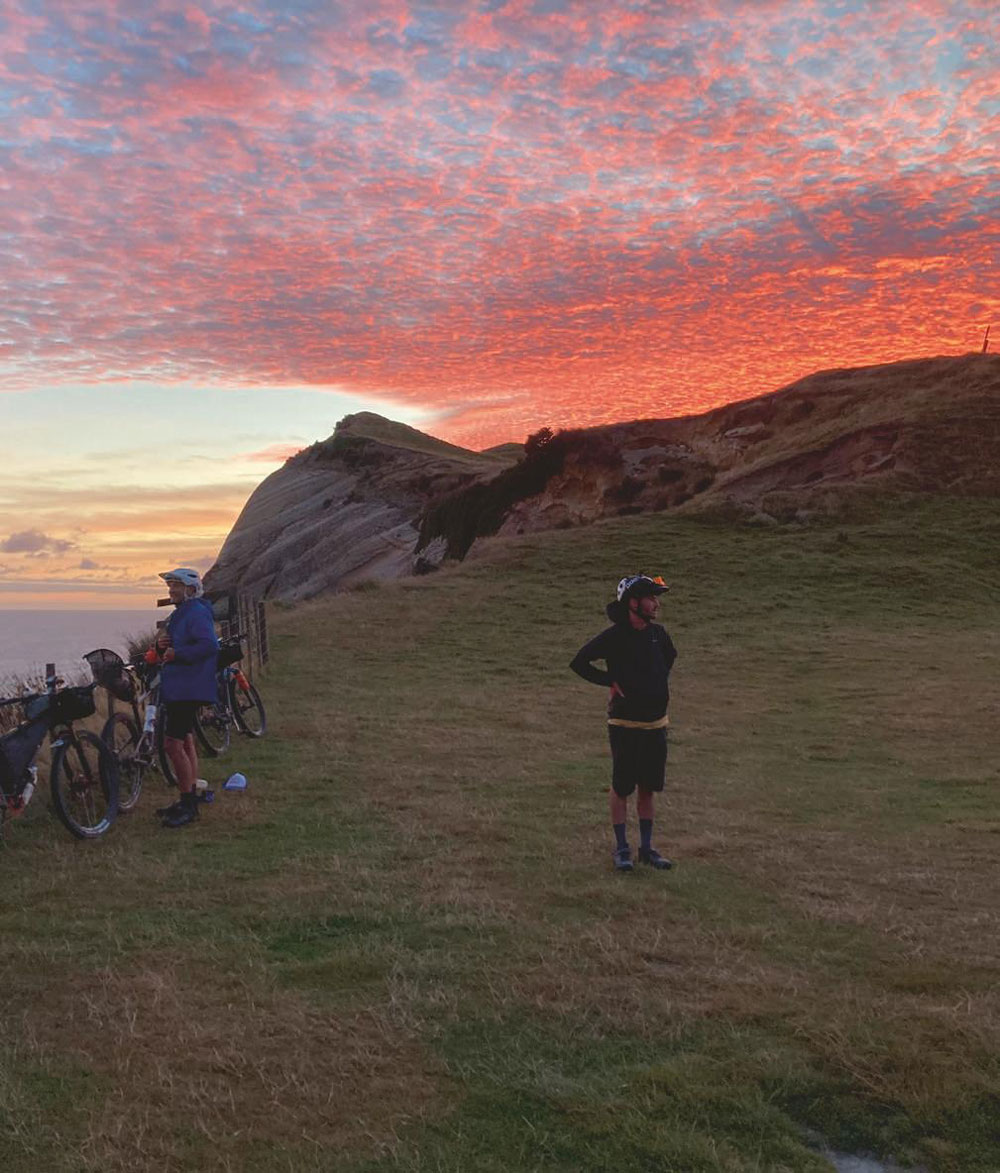
When Brian asked me what I thought of the race, I was adamant I wasn’t keen – bikepacking is an adventure for me and best shared with someone, not solo time trialling with luggage (and strict Tour Divide rules of no drafting, no help, and no teamwork). But, the route was an adventure and after some negotiation, Brian agreed I could enter as a team (still no drafting, though) so I could share the experience. Perfect. Just one more hurdle: to convince my adventure buddy that this would be the best holiday ever. Two months later, Chris had warmed to the idea of spending his only remaining annual leave on Type 2 fun. We were both adamant we were not racing to be first, but racing to complete, along with having the most type one fun (if at all possible). Our non-negotiables were to have a good night’s sleep, nutritional food and adequate hydration (beer). We also had to complete the 1350kms and 22,000 vertical metres within the 13 day cut off. We were 50/50 if we had the right stuff to make the finish line.
The start rolled around sooner than we would’ve liked, and we didn’t manage to do much in the way of training. Well, not compared to everyone else who was posting their overnight and course renaissance missions on social media. The most extreme training we managed to get in was biking over the Maungatapu Track to Pelorus for a pie, and back. It was nothing compared to what we were to face on the tour, but we did learn a valuable lesson: one pie is never enough. The start line saw the initial 50 entries dwindle down to 37. The long-term forecast showed fairly good weather, with the possibility of just one day of rain and cold early on. Based on this crystal ball forecast, some packed light. By light I mean no camping gear and only one gear. I admired these guys – not because they were in skinsuits, but for their ballsiness to ride single speed and go all-in.
A good friend told us that for endurance events, you should start slow, then ease back. This was a mantra for the start. Surprisingly, day one was a Type 1 day, with a beautiful sunrise ride down the beach, toastie sandwiches at the top of Takaka Hill, dry feet and a well-deserved beer in Tapawera. Our issue at this point was that we had made a vague plan we would stop the night there for some comfy beds, but it was too early to stop and waste good weather and light, so on we continued. Just on dark, we had ridden out of a no camping zone and set up camp on top of a hill, under a pylon, hoping the hum from the wires would induce good sleep. I’m sure we were the first to set up camp for the night, but with 201km under our belt for the day and the sun setting, we were keeping to our plan. It’s hard to imagine the whole field completed over 200km in the first day, however, we won’t mention what the front runners did as it shames us.
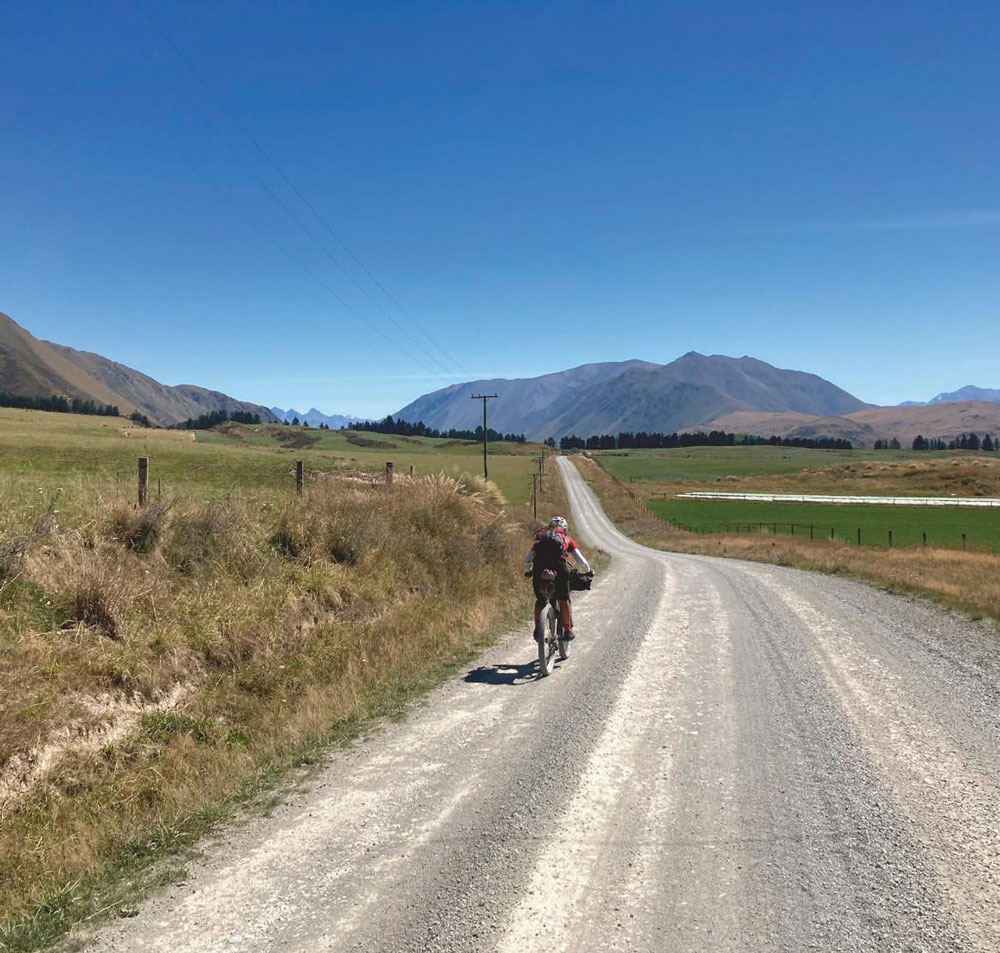
So, from the end of day one, we were dead last. What was this going to mean for the next resupply in Murchison, with 35 hungry bikers going through before us?! We were very worried about the locust effect (all the food being eaten) but, lucky for us, food and coffee was plentiful. Quite a few of the riders had gone through Murchison during the previous night, when nothing was open. With full bellies, we spent the rest of the day churning out some miles over the Maruia Saddle and through back country farms. Occasionally, I would hear the odd murmur from Chris suggesting that, as we had two weeks off work and were relatively close to home, we could just turn around and grab the camper and dog and go on a fun holiday. The prospect of a wet day did not lift the spirits, so whilst having a burger at Springs Junction, I was happy to hear Chris’s Plan B for the night, as I would not succumb to his Plan A just yet. Plan B involved a credit card, Maruia Hot Springs Resort, and beer. I was all in: Type 1 fun was back. Unfortunately, Type 3 fun was encountered the following morning as we dragged ourselves out of comfy beds and into the drizzle on Lewis Pass.
We could now proudly say we were DFL: Dead F***ing Last. It seemed odd to embrace this status considering we’d spent de- cades of cross country racing trying to be first. But I guess, as we get older, we have to embrace whatever we can do and just own it. The only pressure on us now was to not pull out.
Our first official food drop was 25km down the road at Boyle River. Parcels were allowed to be posted pre-event. Most of the competitors had chosen this supply drop, as it was the last opportunity for food for a couple of days. To our great pleasure, most of the other competitors had also decided they’d sent too much food and left a huge pile of unwanted supplies, which we consumed with gusto. We had also sent small packs and running shoes ahead to make the portage sections more comfortable. With the now-increased storage space we greedily filled our packs with an array of delicious food.
The cold rain began to ease on the Hope-Kiwi trail, as we fumbled our way across many annoying swing bridges and wind fall: ride 30 metres, carry 30 metres, and repeat…. for three hours. At least we were warm – the front runners were being challenged by the cold conditions on the long trek over the exposed tops of the Dampier Range (1600+ metres high) further on. In an attempt to lighten our greedy load, we ate our first dehydrated meal – cold. It was not a pleasant experience. Luckily, when we got to the next tramping hut, the fire was going and we boiled some water to enjoy a hot drink. It’s amazing the lift a simple hot drink can give. The next biggest hurdle was crossing the Hurunui River. Do you cross via the extremely long swing bridge or get wet fording the river? We took both options, with myself on the bridge and Chris opting to go starkers across the river to keep his clothes dry. At least I had an amusing view from up high.
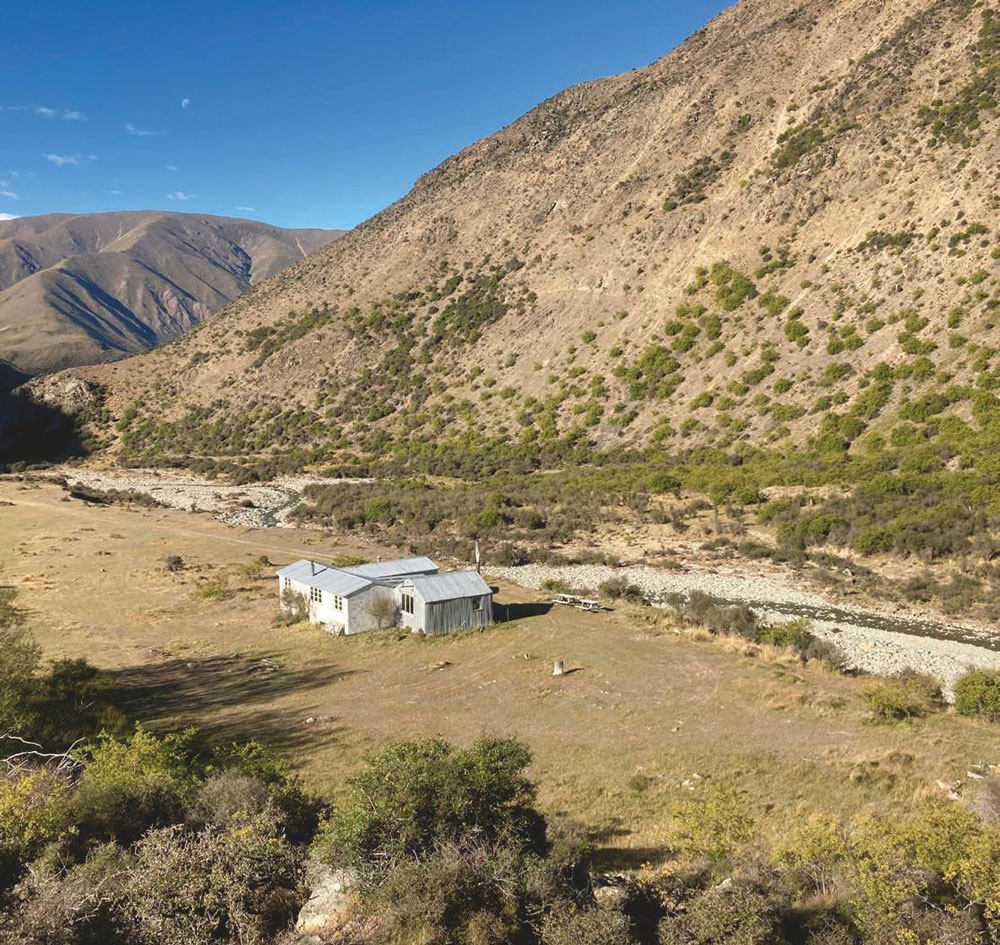
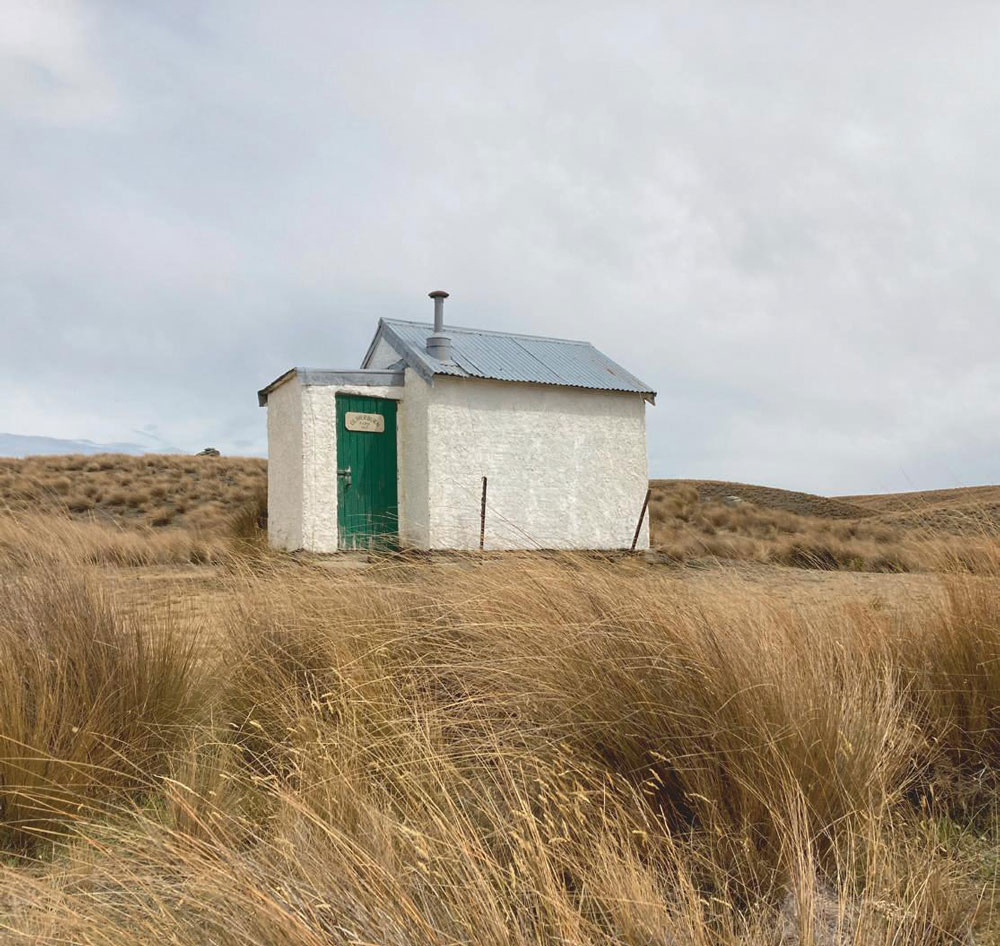

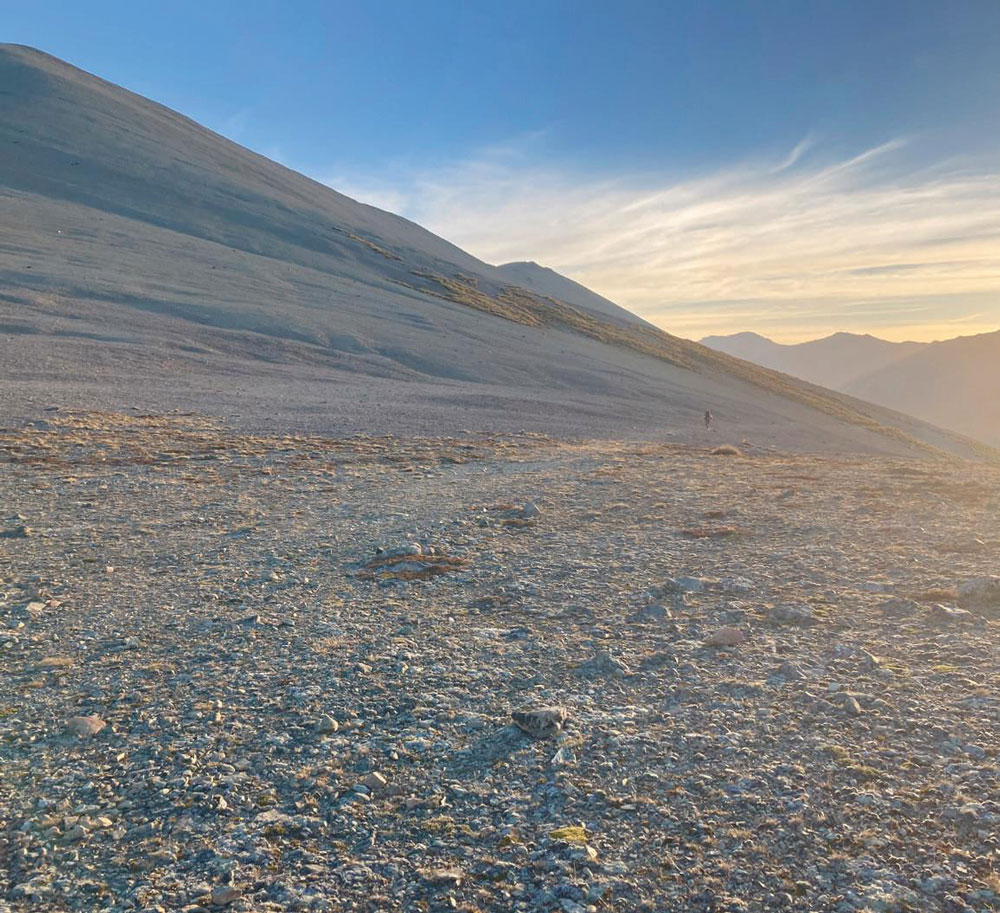
That night, we got stuck riding in the dark, trying to get out of the no camping zone. By the time we were out, it was well past our bed time, and we were damp, cold and hungry. With not a lot of tree coverage to choose from, we pitched the tent under two matagouri trees, on soft sheep poo. We treated ourselves to a sleep in, before tackling the next 12km – that was rumoured to take more than six hours. This was the first hike-a-bike I was dreading. With the sun on our backs, we took in the great views – where we had come from was now far in the distance. We were surprisingly relaxed as we slowly inched ourselves up the steep, untracked tussock land. We would stop often to check we were heading in the right direction, and to readjust our fully laden bikepacking bikes. We found the occasional animal track that allowed us to ride our bikes a mere 40m, before we were back to pushing and carrying our way through waist-high tussock and Spaniard grass. Despite it taking six hours, there was a real sense of accomplishment: we had survived the first hard section. The bike carrying had taken its toll on me, reducing my riding to ‘nana’ pace. So, once out of another no camping zone (Mt White Station), we began looking for a camp site. We managed to find an idyllic campsite off the road, under beech trees, next to a stream and in daylight. We cranked the emergency cooker up and had hot dehydrated food and drinks. We’d finally found contentment in the simplicity of bikepacking: dry clothes, a tent and warm food. Back at Type 1 fun.
The next day was Cass Saddle – a mountain bike ride we had enjoyed many years ago. This time around? Not so much. Riding a hardtail with minimal seat drop and a pack full of gear made it hard to get into the flow of the single track. Looking down a steep track through aero bars is not confidence-inspiring. We were keen to make Methven, which became more and more feasible as we pushed on through a never-ending section of stream crossings down the Harper River. It had been over 60 hours since we’d had the luxury of a shop, and our food restock was depleting. The thought of making Methven gave me an extra gear and, with the last four days of riding/walking, I was starting to feel fitter – or was it just a pint of beer beckoning?
Methven never disappoints us. It was just a shame our stop there was so short lived. However, we maximised our brief visit by eating and drinking as much as we could fit in, messing up and stinking out the front desk and hotel room, then hanging around in the morning to have an all-you-can-eat breakfast before hitting the local cafe and supermarket. It was another late start, but well worth it, as getting to Tekapo was a long, hard ride/push away. We were unsure how the next 190kms would unravel. It involved our next big hike-a-bike, up to nearly 2000m. The Canterbury sun blazed on us as we meandered up the Rangitata River. At 6:30 that night, we had to make a hard call. Would we pull off the track to stay in Felt Hut? Or tackle an 800m vertical bike push up the infamous Bullock Spur? If we went on, we were committed to making Royal Hut, a popular hut on the Te Araroa trail. Surprisingly, we chose the latter. After a heinous drag over the saddle we arrived right on dusk to be greeted by many walkers and other competitors. Were we finally making some ground? With the hut full, we pitched the tent for a cold night.
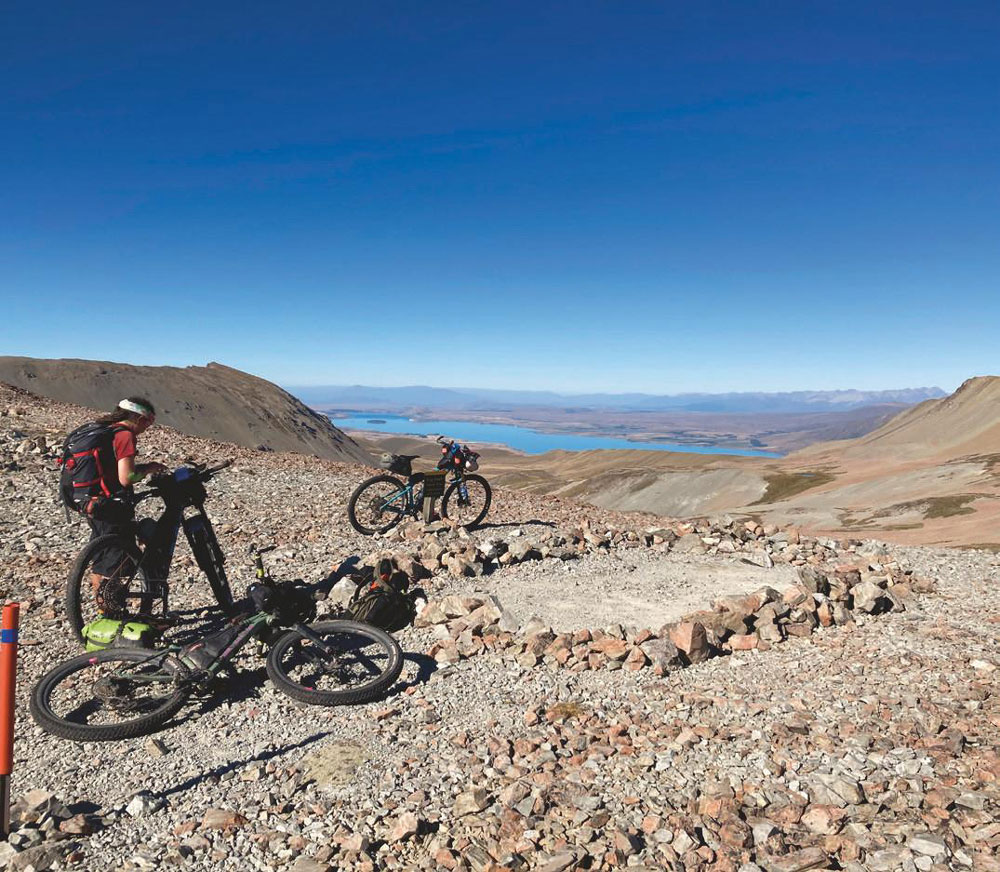
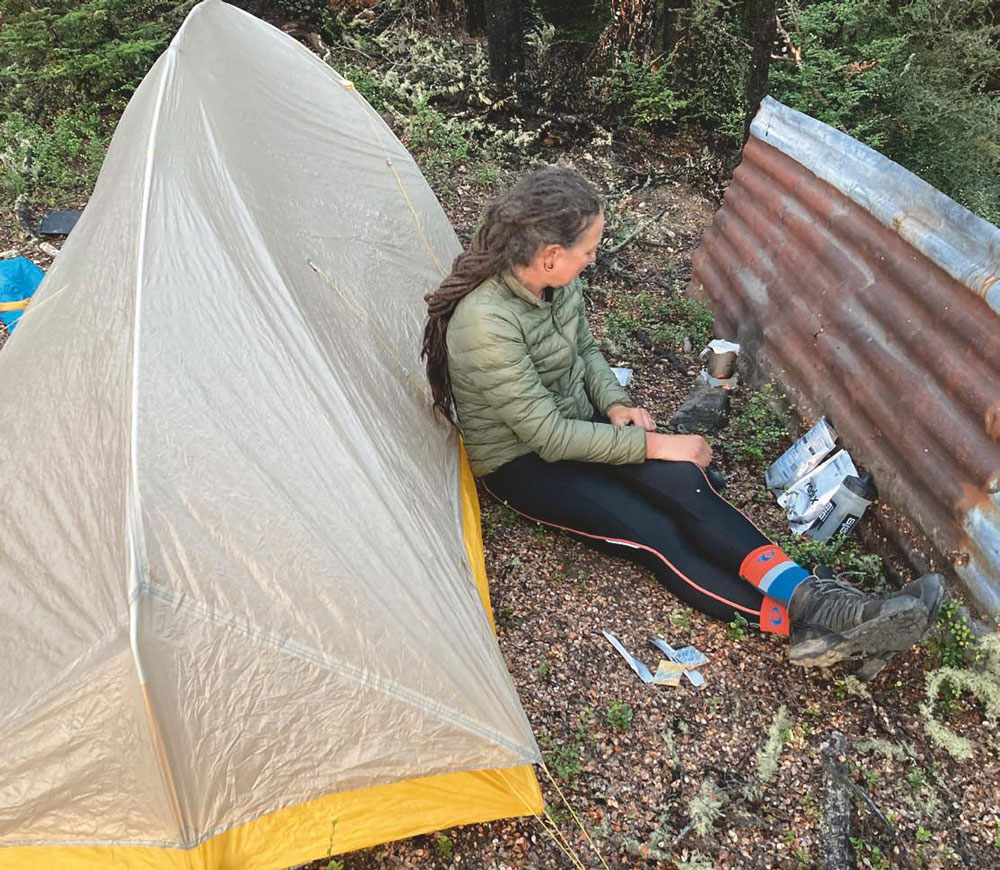
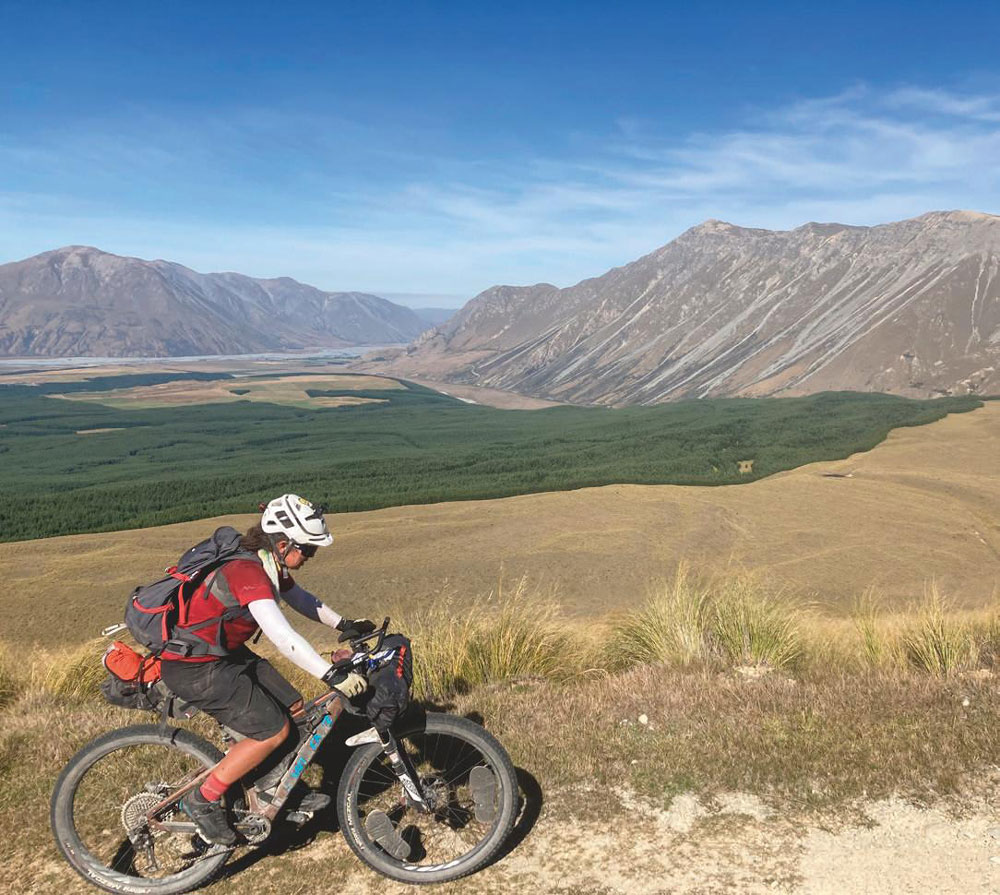
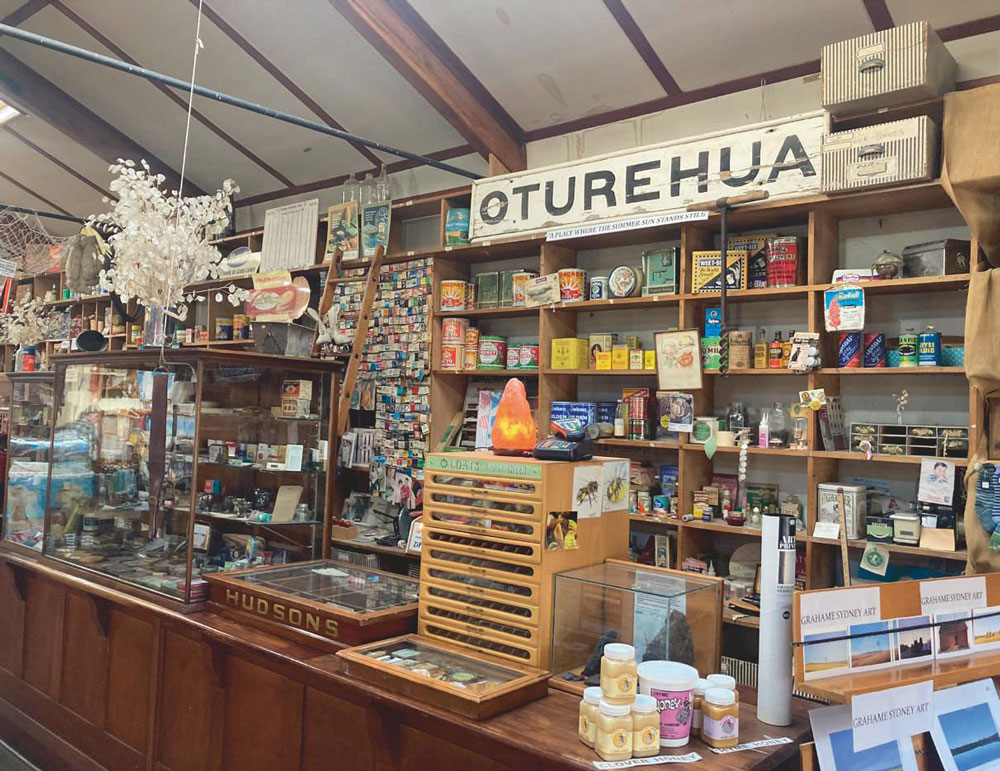
The effects of the tour had now started to take its toll on me and was confirmed in the morning, with my phone’s facial recognition feature no longer working. Apparently, my tired face meant I was no longer me. I figured we might as well add to the tiredness with the morning’s section of the final hike-a-bike, up to Stag Saddle. With a bluebird day upon us, and feeling more comfortable carrying my bike, we set off for the three hour carry. It was not so much a track as a scramble to the top with the reward of picture perfect views of Lake Tekapo. With a false sense of accomplishment, we thought we had finished the hard hike-a-bike component and it was all downhill to Tekapo. But we couldn’t have been more wrong. A sidle around on rocky scree slopes and descending down chunky rocky ridges had us on our toes – more for the fear of destroying our bikes. The ride out of the valley was soul destroying – as if we weren’t crossing the river multiple times, we were also bush bashing through head-high matagouri. We finally got onto some fast single track that claimed both our bikes’ tyres. Unfortunately, only one of the three tyres resealed by itself but, luckily, this was our only mechanical issue on the trip. Looking at the time, we realised we were on a tight schedule to make the Tekapo post shop to post our bags and running shoes back. We began time trialling and – success! – made the post shop with no time to spare. We decided to pull the pin for the day and celebrate the couple of hard days’ slog with a shower, food and beer. We worried that we’d pulled the pin on the riding too early in the evening, as it was barely 5pm. What we didn’t know at the time was that it would pay dividends in the days to come.
An early start was rewarded with a peaceful cycleway along the canal and Lake Pukaki. We reached the next refuelling stop (Otematata) at the hottest part of the day, where we caught up with a few other competitors. Nothing like sitting in the shade eating an ice cream, having a fizzy drink and a pie. Unfortunate- ly, eaters remorse set in during the next several hours of steep hills, which we tackled in classic central heat. It was a stunning ride through a private station and we made a b-line for Wire Yard hut (1470m), which we reached right on dark. To our sur- prise, we found three other riders there and crammed ourselves into the hut, ecstatic we didn’t need to pitch the tent.
A quick change of brake pads in the morning saw us on our way after yet another late start. We caught the others on the rocky descent, thanks in part to the 29 x 2.6 tyres we were running. A refuel at Oturehua was a flashback to days of old, with a quiant well-stocked shop that hasn’t changed in the last 70 years. We busted a move, knowing we had a lot of climbing ahead of us if we were going to make the Beaumont Pub by the Clutha River. We’d heard a film crew had just started filming the L.O.T.R TV series in the Poolburn region – this was confirmed by the traffic shuttling extras up the climb, and the lone donut sitting in a pothole on the road. It took some serious willpower not to hoover it up. The Beaumont Pub was welcoming, with great food, beer and a patron who was happy to park up with a drink and tell us stories. We ordered a pizza to takeaway for breakfast, perfection!
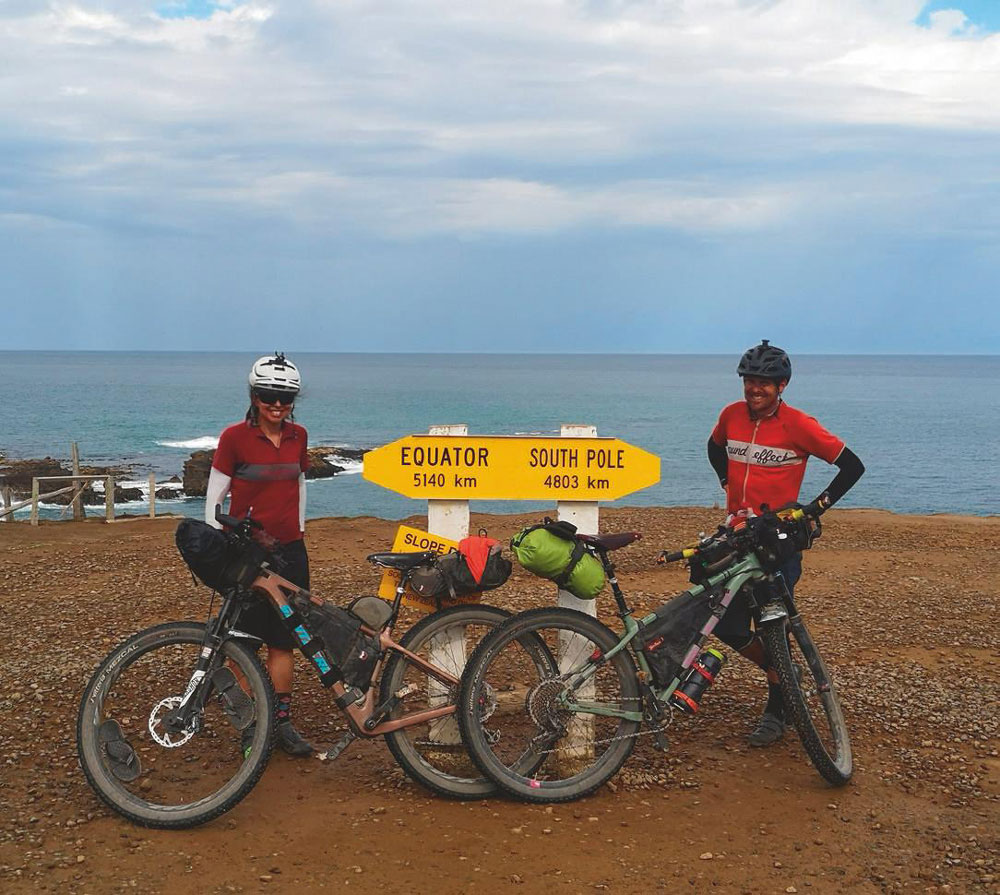
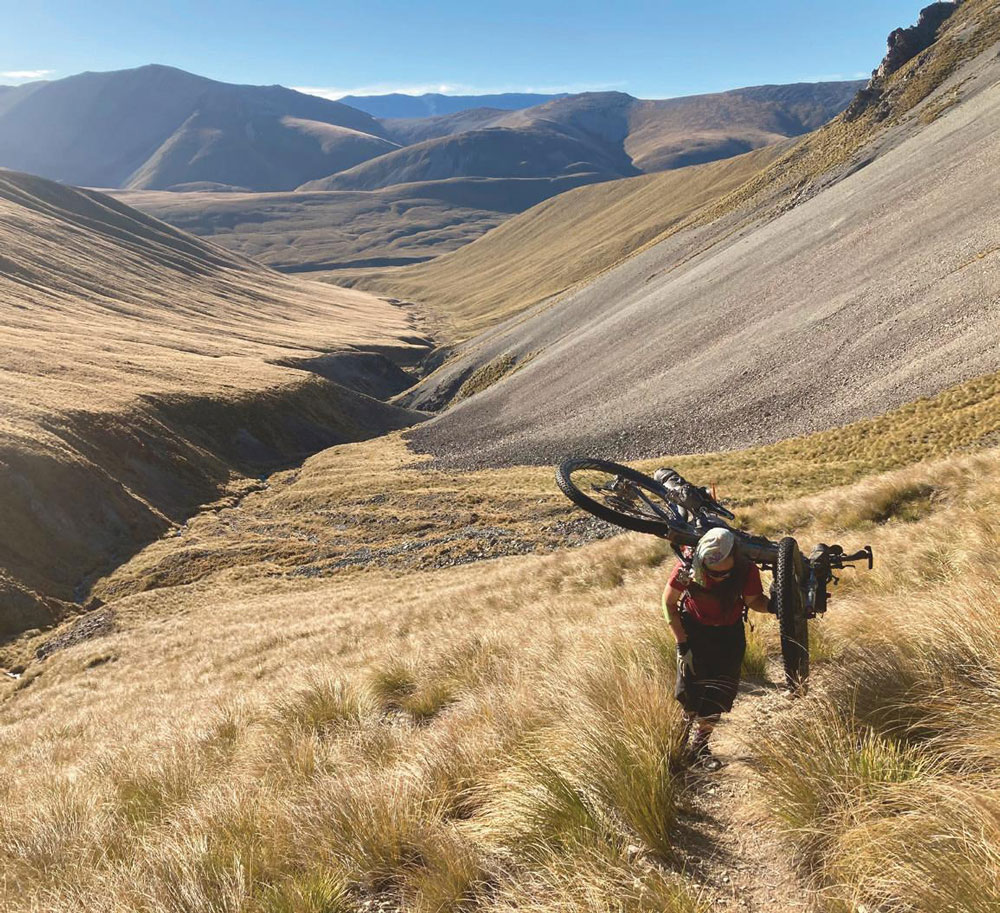
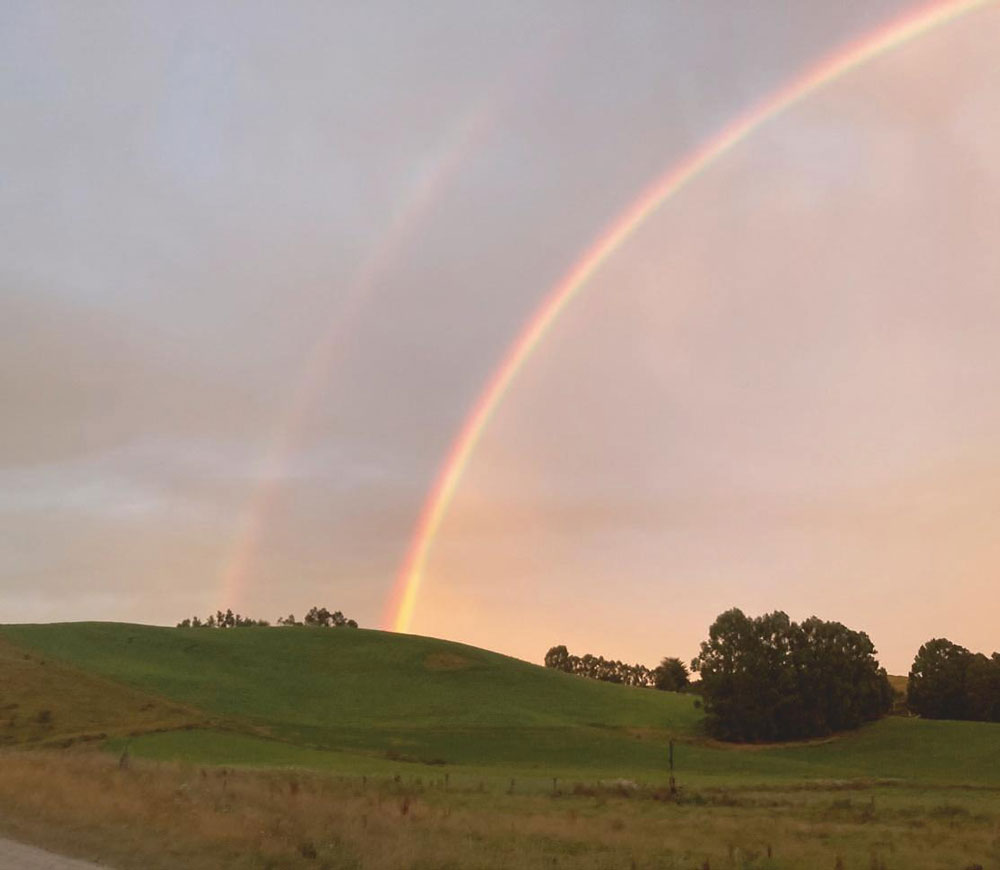
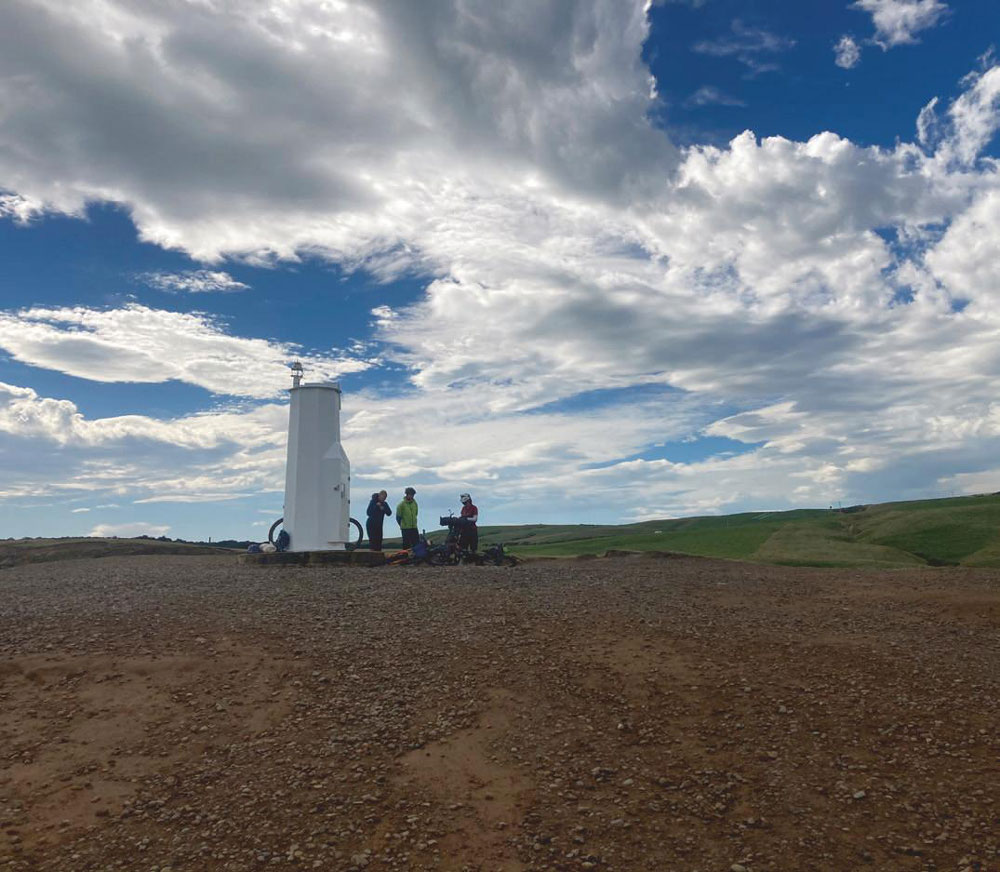
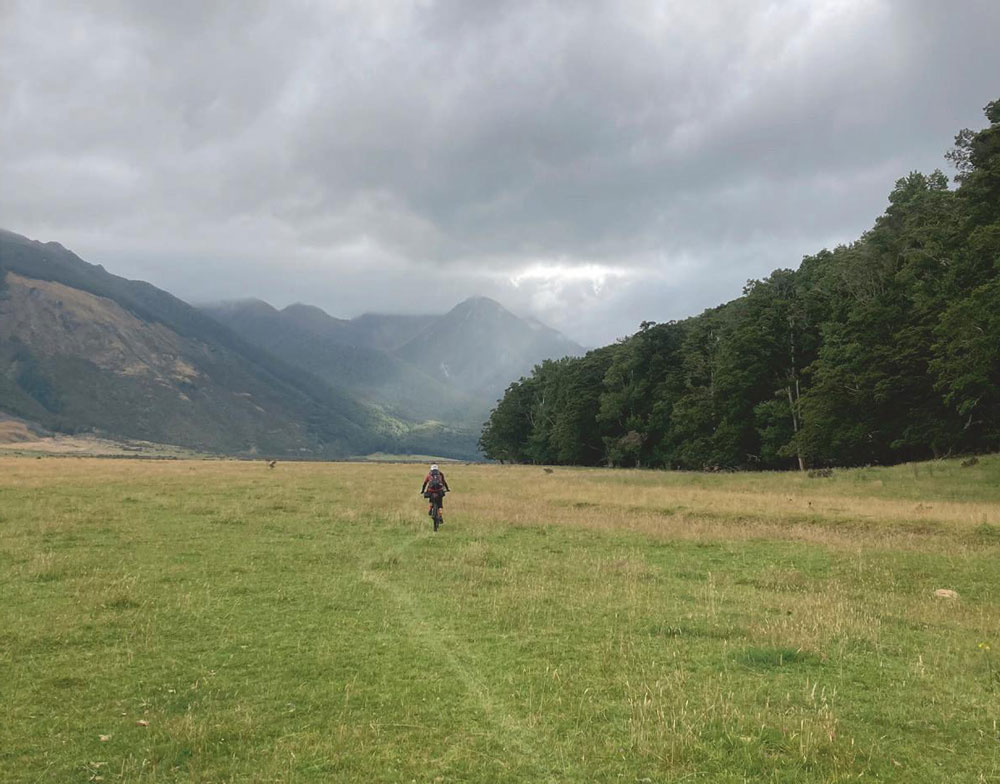
At that point, we started to get ‘finish line fever’, not for fear of coming last but because we had become stronger during the event and were in the mood to let our rouleurs roll. We picked up the pace and limited our stop time. Some light drizzle was accompanied by a double rainbow – was it a sign the end was on the horizon, or just a vision emanated from unicorn shit? Either way, we were rolling through farmland to the Catlins. Having ridden to Bluff previously, we were horrified to see a nasty hill blocking the finish line within the last 4kms. Partway up the final climb, we had a friendly wave from Rob who had been documenting the event. He’d hired a house at the bottom of the hill and, more importantly, had a stocked-up fridge.
It’s a strange emotion finishing these kind of events. There is no finish line, no spectators, no one to shake your hand or talk your ride up to. It’s a weird feeling after being 100% immersed in planning and riding for so long, then stopping and going, “um – what now?”. In saying that, we were greeted by friends who had finished earlier that day and waited for us – it was great to share the accomplishment with others.
Would we do it again – NO. And for 99% of the finishers, it was also a sincere ‘no’. However, several days later, most folk were very happy with their achievement and wouldn’t have changed a thing – it challenged us, and we went to places we had never seen before. We were so lucky with the weather and don’t think we could have had a better time.
The biggest thanks goes to Chris for being my adventure buddy, for all types of fun. Brian Alder for creating an outstanding event, and Santa Cruz for producing such a capable bike – the Chameleon.

